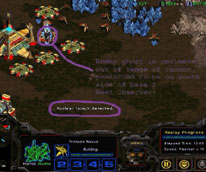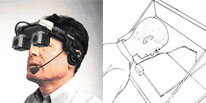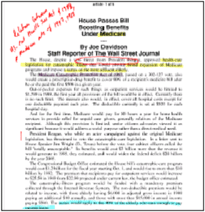|
     
|
|
| |
|
 |
| |
|
|
 |
We study augmented video as a mechanism for improving collaboration
and decision making. Our special focus is decision making that depends
on decision-makers and information analysts sharing their understanding.
The interaction between these two groups involves commanders passing
their intent to their information analysts, then refining their plans
and decisions on the basis of information gathered by their analysts,
often using AUV’s. More |
|
| |
|
|
|
 |
Three-dimensional computer graphics is completely accepted as a required
adjunct to scientific computing. The use of 3D has swept the workstation
world and, thanks to PC accelerator cards, is now moving onto the
desktop as well. Because of VRML and programming language APIs such
as Java 3D, three-dimensional displays are also sweeping the World
Wide Web. We all welcome this, but do we know exactly what it is we
are welcoming? More
|
|
| |
|
|
 |
If you look closely at knowledge oriented work, annotation is likely
to figure prominently. If at first this does not seem true it is because
annotation is so ubiquitous and used for so many functions that we
rarely realize just how often we annotate. Annotations can be spoken
comments, written text, graphical elements, and even gestures. And
they may be applied to representations and sometimes to non-representational
activities. Thus, the thing being annotated may be video, or audio
tapes, textual documents obviously, pictures, graphics, animations,
and certain ongoing activities, such as sports, which may have running
commentaries recorded. More |
|
|












